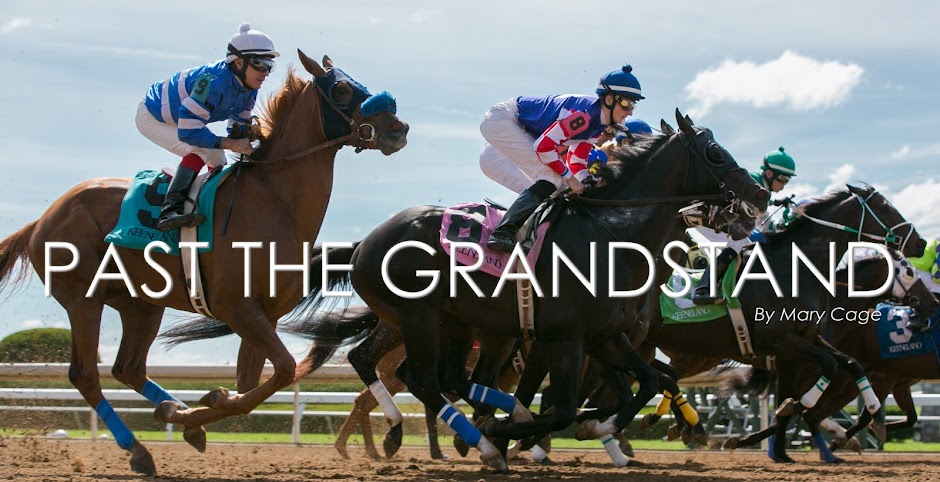With some sentences drawn from “The
Chance of Dual Triple Crowns”
September 15, 2012 will be a date with destiny for Camelot, a horse fittingly named to be the only one with a chance to become the first Thoroughbred since Nijinsky II in 1970 to take the English Triple Crown. Usually the question of “Can he do it?” would emerge in such a situation, but, rather, many are asking, “How much will he win by?”
Camelot is on his way to achieving a legendary status and many have already dubbed him an all-time great, despite the fact that the stunning bay has only contested five times throughout his career. However, it is completely understandable why this colt is so highly regarded. All five of those starts have been victories and four of them have been group ones, including three classic triumphs.
After winning a maiden special weight at Leopardstown Racecourse in Dublin, Ireland last July, the two-year-old version of Camelot took the Racing Post Trophy (GI) at Doncaster Racecourse by 2 ¼ lengths, becoming the winter book favorite for England’s premier race and second leg of its Triple Crown, the Epsom Derby (GI).
In just the third race of his career, Camelot contested in the 2,000 Guineas (GI), the first jewel of the English Triple Crown. As a field of eighteen three-year-old Thoroughbreds began their one-mile journey at Newmarket Racecourse, the highly-regarded Camelot found a position near the back of the pack with the young Joseph O’Brien aboard. The colt came from off the pace to overpower French Fifteen by a neck despite his distaste for the going and one-mile distance.
Camelot proceeded along the Triple Crown journey, starting next in the prestigious Epsom Derby. The Aidan O’Brien trainee again found a spot near the rear of the field as Joseph O’Brien coolly settled aboard him, appearing absolutely confident in his superb mount. The 2,000 Guineas victor remained several lengths off the lead as the nine horses continued their mile and one-half journey, relaxing beautifully beneath nineteen-year-old O’Brien. With urging from O’Brien, Camelot accelerated impressively, rapidly gaining ground on his stablemate Astrology in the long straightaway. In spite of the fact that it appeared Astrology would battle him to the wire, Camelot kicked clear under confident handling from O’Brien, winning by a remarkable five lengths. The scary part about his unbelievably impressive Epsom Derby victory? Joseph O’Brien yet again did not believe the colt relished the going.
Four weeks after capturing the Epsom Derby, Camelot contested in the Irish Derby (GI) at The Curragh. With his two-length triumph in the second leg of the Irish Triple Crown, Camelot not only gathered the third classic victory of his career, but became the first horse since High Chaparral ten years ago to win both the Epsom and Irish Derbies.
Should all go well, Camelot will in fact make a start in the St. Leger Stakes (GI), the final jewel, in attempt to become the first English Triple Crown victor in forty-two years. Luckily for him, his bloodlines hint that he will able to be triumphant at the grueling mile and three-quarters distances of the final leg of the Triple Crown.
The sire of Camelot is the late but brilliant Montjeu, who won multiple prestigious races at twelve furlongs, including the esteemed Prix de l'Arc de Triomphe (GI). Montjeu has sired two St. Leger winners in Masked Marvel and Scorpion and is of course a son of the great sire Sadlers Wells, who produced the St. Leger victors Brian Boru and Milan. The dam of Montjeu, Floripedes, was a champion French filly who won the Prix de Lutèce (GIII), which covers approximately fifteen furlongs, or a mile and seven-eighths.
 |
| Kingmambo's memorial at Lane's End Farm Photo by Terri Cage |
Camelot’s dam, Tarfah, was a successful racehorse herself, winning three stakes races, including the Dahlia Stakes (GIII). Tarfah is a daughter of the great Kingmambo, who, despite being a tremendous miler on the track, sired 2004 St. Leger winner Rule of Law. Kingmambo has proven to be a top broodmare sire of distance horses, being the damsire of such horses as Duke of Marmalade, Midday, and Wiener Walzer.
Camelot’s third dam, the stakes-winning Fickle, is a daughter of the outstanding sire Danehill, who sired multiple brilliant distance horses, such as Champs Elysees, North Light, Westerner, and many others. Camelot’s dam line provides him with many stamina influences, including his fifth dam, Seventh Bride, who won the ten-furlong Princess Royal Stakes. Interestingly, Camelot descends from the same female family – family four – as English Triple Crown winner Rock Sand.
Thousands of American racing fans mourned the loss of I’ll Have Another’s chance at our Triple Crown, but perhaps those fans can turn their attention to the magnificent Camelot. His date with destiny awaits and should he continue his brilliance like many expect him to and become just the sixteenth horse to win the English Triple Crown, he could leave the racing world cheering with joy.
Remember to like Past the Grandstand on Facebook and follow Past the Grandstand on Twitter! Links can be found on the right side of the blog.

No comments:
Post a Comment